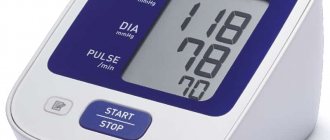To ensure uninterrupted operation of equipment and increase the safety of employees working at any industrial facility, a series of electrical tests and measurements must be regularly carried out in accordance with the regulations for scheduled preventive maintenance or PPR, as well as the requirements of the rules for the technical operation of consumer electrical installations (PTEEP). Such checks will allow you to promptly identify existing problems and prevent incidents or emergencies.
According to statistics, most fires occur due to faulty electrical wiring. An accidental spark resulting from minor mechanical damage can cause irreparable damage. Regular monitoring of all electrical wiring elements will help prevent accidental fires, save property and lives. And with this, specialists from the Electrical Measurement Laboratory (ETL) will provide you with significant assistance.
Causes of electrical fires
Electrical wiring faults can be reduced to two main reasons:
- physical aging. This may include damage resulting from long-term use, wear and destruction of chain components;
- obsolescence: associated with technological progress, which has made equipment that was still in good working order obsolete and irrelevant.
There is a risk of fire due to a faulty electrical circuit. The cause of the fire is:
- Poor contacts At the junction of the wires, due to oxidation of the metal and mechanical weakening of the compression of the contacts, increased resistance occurs. When current flows through the problem area, heat is generated. When the current and resistance parameters are high, energy is released that can lead to ignition of the assembly as a whole.
- Damaged electrical switches or installation of overrated switches When the maximum permissible current occurs in the network, the switch does not operate, which leads to a short circuit in the network and subsequent fire.
Electrical measurements and control
In order to reduce the risk of fire, enterprises and organizations, regardless of their form of ownership, are required to regularly inspect the electrical network and promptly repair damaged areas. Responsibility for monitoring the condition of the electrical network rests with the chief electrician/power engineer.
In addition to regular monitoring of the state of the electrical network, each organization is required to conduct electrical measurements. Based on the results of the work performed, a report must be written that confirms the reliability and safety of the industrial power grid. All work on electrical measurements must be performed by a third-party certified laboratory.
Note! Managers and responsible persons who have not passed the Rostechnadzor inspection may be subject to administrative liability!
Electrical laboratory. Functions and Features
The electrical laboratory is an independent institution whose employees have the right to conduct electrical measurements, measurements, inspect wiring and provide their assessment of the safety of the enterprise's electrical network. The organization regularly confirms its right to provide electrical measurement services by obtaining a certificate from Rostechnadzor.
During the inspection it is confirmed:
- qualifications of laboratory staff;
- equipment performance;
- the right to conduct research on electrical equipment and networks.
ETL equipment is regularly tested for the accuracy and reliability of the data obtained, and technical reports and the content of test or measurement results are confirmed by Rostekhnadzor inspections and, in the event of force majeure, are accepted by the court as evidence.
The electrical laboratory is truly an independent expert and can provide objective data on the performance of the electrical network of each business facility.
What is the work of the laboratory
Scheduled measurements should be carried out according to the algorithm developed by Rostechnadzor, but no less than once every three years. Without a report on a scheduled inspection, an enterprise may be fined, and in the event of a repeated violation, its work is in most cases suspended. To avoid difficulties associated with forced downtime, managers of enterprises and organizations can enter into an agreement with ETL for regular monitoring of the condition of electrical networks. The results of a scheduled inspection of the condition of electrical networks will be presented in a technical report, which is provided to the management of the enterprise.
Unscheduled inspection and electrical measurements are necessary in the following cases:
- major repairs, redevelopment of the building;
- liquidation of consequences of an emergency situation (fire, flood);
- taking office electrician or ch. energy;
- before selling or renting the premises of the enterprise;
- emergency event (short circuit, protection failure);
- at the request of the manager.
Who orders electrical laboratory services?
The customers are:
- commercial and industrial enterprises;
- construction organizations delivering turnkey projects;
- general education, municipal organizations;
- financial institutions;
- military facilities (small towns, training grounds, bases); scientific research centers;
- research centers and others.
The electrical laboratory does not provide services to private individuals due to the low household load on the electrical grid.
Tests and measurements in electrical installations
Any power supply network for a residential building, business center or industrial building is a collection of supply wires, protection devices and points of consumption.
Each of these components requires periodic inspection to confirm suitability for further use.
Tests and measurements in electrical installations up to 1000 V, which are carried out by our electrical laboratory, make it possible to guarantee safety when commissioning a new distribution network, as well as reduce the likelihood of accidents when using the existing power supply scheme to consumers. All measurements are carried out by qualified specialists using certified domestic and foreign instruments, which indicates the high quality of the services provided and increases confidence in the results obtained.
What is included in the set of measurements?
Comprehensive testing of electrical installations includes the following work:
- Full inspection of the facility;
- Measuring the resistance of the grounding device;
- Checking the presence of connections between the grounding loop and grounded network elements;
- Wiring insulation test;
- Loading of circuit breakers and residual current devices (RCDs);
- Phase-zero loop measurement.
Checking the RCD response current
At the first stage, specialists conduct a thorough inspection of all visible connections and assess the condition of the insulation of wires and cables. This operation allows you to identify the problem area at an early stage without the use of special equipment.
Obvious signs of a malfunction are a change in color or melting of the wire insulation, as well as a violation of the integrity of the place where the cable is connected to the machine, which indicates unsatisfactory contact at the connection point and the occurrence of transient resistances.
For the safe use of a power facility and all consumers connected to it, it is necessary to have a grounding loop consisting of artificial vertical and horizontal grounding conductors.
Grounding is necessary to create a path for current flow that occurs during emergency operation.
The resistance value is regulated by PTEEP and the lower it is, the higher the likelihood of protecting people and technological equipment from electric shock.
The next logical stage of testing electrical installations is to check the presence of connections between the grounded equipment and the grounding device.
When carrying out this measurement, the compliance of the connection diagram of all consumers, the presence of physical contact of the conductors with the circuit, and the absence of voltage on the equipment housings are checked.
After taking measurements, we can talk about the safety of further operation of the facility.
Testing the insulation of cables and wires is a mandatory item during electrical measurements. This operation allows you to determine whether the insulation characteristics of the wiring comply with standard values.
Tests are carried out both for the external insulation and for the insulation between each individual conductor.
If the results are positive and the insulation characteristics are normal, then this indicates safe use of the distribution network.
Measurement of the phase-zero loop is carried out to confirm the functionality of the circuit breakers during short circuits.
During the measurements, the maximum fault current for a selected group of consumers is determined, which is compared with the time-current characteristic of the circuit breaker reflected in the technical data sheet.
If the obtained value is within the shutdown zone, then the machine will provide reliable operation and protection against electric shock. Otherwise, this unit must be replaced.
Loading of automatic devices and RCDs is carried out after installation in the distribution board. This operation is necessary to confirm the characteristics declared by the manufacturer and to search for defective protection devices. Such tests are relevant at the initial stage of installation of the distribution network.
Measuring the current flow of the ground loop
Test frequency
The frequency of testing electrical installations is regulated by regulations and is at least once every three years for conventional installations and annually for external networks and objects recognized as dangerous.
We recommend testing be performed annually to ensure safe operation of the power facility and to protect personnel from electrical shock.
The result of comprehensive measurements and tests is a technical report, which reflects all stages of verification, as well as identified violations and measures to eliminate them. All work on measurements and processing of the received data is carried out as quickly as possible, taking into account the requirements of current legislation, which guarantees the passage of any inspections by authorized supervisory authorities.
Source: https://elektrolaboratoriya.com/elektrolaboratoriya-ispytaniya/ispytaniya-i-izmereniya-v-elektroustanovkah.html
Frequency of electrical equipment measurements
The standards developed for enterprises and organizations of all forms of ownership emphasize that the responsibility for regular testing of the electrical network lies with the technical manager or those responsible for technical maintenance. For the correct operation of the enterprise, a schedule of planned compulsory inspections of networks and electrical equipment is drawn up. The schedule is agreed upon with the head of the enterprise and is mandatory for implementation.
The main parameter for determining the safety of an electrical network is the measurement of insulation resistance. Depending on the hazard class and other factors, the frequency of such measurements is:
- in especially hazardous areas on outdoor electrical installations (EU) - annually;
- in other premises - once every 36 months;
- in cranes and elevators - annually.
High-risk premises are considered to be laboratories, workshops, and industrial buildings in which more than two conditions of increased danger are present:
- dampness;
- conductive dust;
- heat;
- aggressive chemical environment;
- the possibility of a person touching a grounded structure with a current-carrying element.
Some enterprises and installations have developed their own regulatory documents regulating the parodic control of the electrical network. Among them:
- healthcare institutions that are required to conduct electrical tests, in accordance with PPBO 07-91, clause 2.3.12a: - premises of special danger - once every six months; — other premises once a year; — resistance and insulation measurements once a year;
- Public catering establishments are required, according to POT RM-011-2000, to inspect the electrical networks of: - premises of special danger once every six months; — other premises once a year;
- Dry cleaning enterprises, guided by the order of POT RM-013-2000, conduct inspections of: - high-risk premises once every six months; — other premises once a year; — checking grounding once a year;
- inspection of lifting devices (cranes, elevators, lifts) is carried out, in accordance with PB 10-518-02, by examining the wiring insulation and grounding condition - annually.
If a company operates in one of the listed industries, then when drawing up an inspection schedule, it should be guided by the above recommendations. All other enterprises draw up an inspection schedule according to the general standards set out in the latest edition of the PT EPP. ETL engineers will help you clarify and develop your own inspection frequency schedule and include the necessary electrical tests in it.
Electrophysical measurements and frequency of their implementation
Electrophysical measurements are a mandatory procedure for measuring the parameters of various power consumption systems.
The main task of carrying out electrical measurements is to detect possible faults that could arise over time and which could lead to unpleasant consequences. Therefore, it is very important to keep electrical equipment and electrical installations under the control of specialists. The Code of the Republic of Belarus on Administrative Offenses provides for liability for violation of the rules for operating electrical installations (Article 20.12).
The frequency of electrical measurements can be found in the list that we have prepared for you.
This information is compiled in accordance with the current technical regulations and is relevant today:
insulation resistance
- measurements must be carried out during commissioning, then at least once every 3 years, and for some types of equipment (cranes, elevators, etc.) annually (TKP 181-2009, clause B.27.1)
- portable and mobile electrical receivers - at least once every 6 months (TKP 181-2009, paragraphs 6.5.11; 6.5.12).
- in laundries and baths should be done: in dry rooms once a year, and in especially damp rooms (soap and steam rooms) - once a quarter (TKP 181-2009, clause 6.11.3.19)
- household stationary electric stoves - at least once a year (TKP 181-2009, paragraphs 6.11.4.8; 6.11.4.9)
resistance of grounding devices
- measurements must be carried out during commissioning, then at least once every 6 years (TKP 181-2009, clause B.29.4; 5.8.21)
- lightning protection – once a year (TKP 181-2009, clause 5.9.8)
- electrical installations of laundries, bathhouses and hotels - at least once every 6 months (TKP 181-2009, clause 6.11.3.22)
checking the connections of grounding conductors with grounded elements with measuring the contact resistance of the contact connection
- measurements must be carried out during commissioning, then at least once every 6 years (TKP 181-2009, clause B.29.2)
checking the phase-zero circuit (grounding circuit) in electrical installations up to 1 kV with solid grounding of the neutral
- measurements must be carried out during commissioning, then at least once every 6 years (TKP 181-2009, clause B.29.8)
- electrical installations in explosive areas at least once every 2 years (TKP 181-2009, clause 6.4.13)
measurement of parameters of residual current controlled residual current devices (RCD-D)
- measurements should be carried out during commissioning, then a year after commissioning, then at least once every 6 years (TKP 181-2009, table B.2.3.1)
checking the operation of maximum, minimum and independent releases (circuit breakers)
- tests must be carried out upon commissioning, then a year after commissioning, then at least once every 6 years (TKP 181-2009, table B.2.3.1).
Fines and punishments for lack of inspections
Rostechnadzor inspectors have the right to conduct an inspection of the electrical network of small and medium-sized businesses, as well as check the submitted documentation on the safety of electrical equipment.
Untimely verification of the security of networks and electrical installations or its complete absence leads to fines or a complete shutdown of the enterprise. For example, the electrical engineering laboratory of Perm calls for a responsible attitude to the orders of Rostekhnadzor and timely implementation of scheduled preventive work.
Note! Control over the safety of electrical installations in our country is entrusted to independent electrical laboratories; Planned safety checks of power plants cannot be carried out by the enterprise!
The most common violation according to Rostechnadzor statistics is the lack of a protocol for checking the technical condition of the power plant. Failure to submit this document is equivalent to a violation of the operating rules and, according to Art. 9.11 of the Code of Administrative Offences, entails punishment:
- for officials a fine of up to 2 thousand rubles;
- for individual entrepreneurs up to 4 thousand rubles;
- for enterprises and organizations - up to 40 thousand rubles or suspension of activities for 90 days.
To avoid financial penalties, you should regularly conduct appropriate laboratory tests and submit the necessary documents to control authorities. If the company is not able to conduct tests and properly draw up a report, then an electrical laboratory can provide this service.
Algorithm for interaction with the laboratory
Before starting work, you must consult with a company employee and determine exactly what laboratory services you need. For routine monitoring of the operation of the electrical network, a contract is concluded for certain types of services - and after repairs, it may be necessary to conduct extended tests. The list of services will necessarily be specified in the agreement signed between the enterprise and ETL. The cost of the work and the date of measurements will also be indicated there. On the appointed day, ETL representatives visit the site and take the necessary measurements. Laboratory employees must be granted access to any premises of the institution. Based on the results of the work, a technical report is drawn up on the condition of the electrical equipment and network of the enterprise.
The rules regulate the following measurements and procedures:
• determination of electrical resistance of protective grounding devices, insulation of lighting networks, electrical wiring, distributors;
• establishing the quality of communication between grounding conductors and grounded equipment;
• control of the residual current device by measuring the differential current at the time of shutdown and the duration of the RCD shutdown;
• checking the touch voltage indicator;
• measurement of illumination indicators;
• in electric machines with a maximum voltage of up to 1000 V, the grounding circuit is tested by measuring the total resistance of the circuit; the current strength of a single-phase short circuit to the body or to zero is determined by calculation.
After the measurements are taken, a log is filled out and a test conclusion is issued.
List of types of electrical measurements that are required to be carried out
Measuring phase-zero loop resistance
The operation parameters of protective equipment are determined, which should turn off the section in the event of overcurrent formation. Electrotechnical laboratory specialists analyze whether the cross-section of conductors in the circuit being tested is correctly selected - if there is a discrepancy, there may be a risk of damage, insulation breakdown and breakdown of installed units.
Lightning protection test
A number of points are checked: the connection between grounding and the lightning rod, the insulation resistance of grounding conductors, the transient resistance of bolted connections, the condition of structural elements. The procedure is necessary to ensure that the lightning protection system is working properly, which should work safely if lightning strikes.
Electrical testing
The equipment's compliance with technical specifications is determined. This type of electrical testing is necessary after completion of installation, reconstruction or repair of units, if there are suspicions of irregularities in parts of the networks and during acceptance tests.
Testing of PPE protective equipment
Dielectric gloves, boots, galoshes, power tools and other personal protective equipment are tested to determine whether they meet safety standards. If so, then continued use is permitted - otherwise a replacement is required to ensure the safety of employees while working; Circuit breaker testing
Circuit breaker testing
Tests are carried out to establish the serviceability of circuit breakers - the time-current characteristic of the circuit breaker is compared with the standard one specified in the requirements in GOST R 50345-2010. When the parameters are normal, you are allowed to continue operating the devices.
Ground resistance measurement
Search for problem areas, if any - using a specialized device, the grounding-ground voltage ratio is determined in relation to the current that passes through the grounding system into the ground. Thanks to this, it is possible to avoid fires and electric shock.
Insulation resistance measurement
The condition of the cables and other conductors is studied to see if the insulation has been destroyed under the influence of high voltage, sunlight, temperature conditions and other factors. Based on the results, a conclusion is drawn whether further operation of the facility is safe or whether urgent replacement of an unsafe cable/wire is necessary.
The above types of electrical measurements must be ordered only from a certified laboratory - otherwise the test reports will not be accepted by Gospozhnadzor (Ministry of Emergency Situations), Rostechnadzor and any other regulatory organization.
What are electrophysical measurements
Measurements play a significant role in human life. Every day, each of us is faced with measurements, starting with estimating sizes and distances by eye, and ending with high-precision measurements in complex technological processes in production. Among all other measurements, electrophysical measurements (EPI) occupy a special place. Why? Let's find out the answer to this question.
The purpose of electrophysical measurements is to obtain information about the resistance of electrical equipment and electrical installations to ensure safe working and resting conditions for humans. It should be noted separately why these measurements are called electrophysical. The fact is that materials and substances in the world can be divided into two groups: with high electrical resistivity and with low. The former conduct electricity poorly, the latter conduct electricity well. Accordingly, materials with high resistance (above Ohm m) - dielectrics - are excellent for insulation, or protection against electric current. Materials with low resistance (less than Ohm m) - conductors - conduct current well and are widely used as conductors. During EPI, the physical parameters of various materials, substances and equipment are studied using electrical measuring instruments, which is why the measurements in question are called electrophysical. For example, it conducts the following types of EFI:
— insulation resistance measurement;
— testing the grounding circuit (phase-zero circuit) in electrical installations with voltage up to 1 kV with a solidly grounded neutral;
— measurement of resistance of grounding devices;
— measurement of lightning protection resistance;
— checking the presence of a grounding circuit, i.e. checking the connections of grounding conductors with grounded elements with measuring the contact resistance of the contact connection;
— checking the performance of the RCD and its response time;
— measurement of soil resistivity;
— testing of circuit breakers (automatic machines);
— loading of automatic machines and differential circuit breakers (differential circuit breakers);
— testing of personal protective equipment (PPE).
All these types of measurements are aimed at ensuring a high level of electrical safety. The consequences of untimely EFI or their complete absence can be considered using only two examples. On February 16, 2011, while determining the cause of the ventilation system malfunction, an electrician died due to electric shock. The injury occurred when a hand touched a metal electric motor on one side and a metal pipeline on the other. The fatal factor turned out to be the presence of tension on the engine housing due to the fact that the housing was not zeroed. On August 5, 2021, a cleaner died while leveling grain in a tractor trailer. Death occurred as a result of touching metal parts of the pneumatic loader that were not zeroed. Voltage on the conductive parts appeared due to a violation of the insulation of the phase wire and its contact with the conductive parts of the installation.
Such situations can be avoided by periodically conducting electrical measurements. Over time, the properties of insulation deteriorate for various reasons: due to its natural aging, mechanical wear or damage, operation at elevated temperatures or in an aggressive environment, high humidity or excessive contamination of the insulation. In addition, the insulation properties may deteriorate due to partial discharges occurring in gas inclusions in the thickness of the insulation. The same can be said about materials used as current conductors. If the installation is poor or works in an environment with unfavorable conditions, the metal of the conductor may be subject to corrosion, and the contact resistance at the junction of the conductors may increase. For example, aluminum electrical wiring tends to become coated with an oxide film. Over time, due to the oxidation of aluminum, the thickness of the oxide film increases and the effective cross-section of the conductor decreases, its resistance increases, which leads to increased heating of the wire. Personal protective equipment such as dielectric gloves and boots can also be damaged during use. It is these reasons that determine the existing frequency of measurements, which is enshrined in the “Rules for the technical operation of consumer electrical installations” (TKP-181-2009).
Electrical measurements are initially carried out during acceptance tests, periodically (operational measurements) are carried out in production premises, rooms with high humidity, in retail areas, office and residential buildings and other similar premises where there is a possibility of electric shock.
The TMRsila-M laboratory is an accredited laboratory, which guarantees the accuracy of measuring instruments, the competence of specialists conducting measurements and preparing technical reports, and gives the right to conduct tests in electrical installations.
Share on social media networks:
- Facebook()
www.38i.ru
Social buttons for Joomla
Why is a technical report needed?
The technical report and measurement protocol are the basic reports of the electrical laboratory engineers who carried out electrical measurements and testing of the electrical equipment. Documents of the established form are drawn up by ETL and provided to the customer.
The technical report consists of:
- title page, which indicates the customer, performer, date of measurements;
- content;
- an explanatory note indicating the purposes of the measurements, the characteristics of the construction site where the measurements were taken, as well as a list of tests performed;
- programs of measurements performed, test results;
- measurement protocol (filled out on a standard form, contains information about the methods of testing and the step-by-step process of work);
- indications of identified defects and shortcomings that may affect the safe operation of the network and power plant;
- conclusions of ETL specialists on the safety or unsafety of operating the network and power supply, compliance of the equipment being tested with the requirements of the Electrical Electrical Regulations, GOST, PTEEP.
- copies of the certificate of registration of the electrical laboratory, which indicates its right to conduct electrical tests and draw appropriate conclusions.
Timing of electrical tests
There are no specific deadlines for submitting a technical report (TR) on tests. But the laboratory of electrical measurements, as a responsible executor, submits maintenance and related documents strictly on the date specified in the contract. The usual period for compiling a report lasts 2-3 business days, in some cases (complex equipment, large volumes of work), the period for compiling will be extended. For small power plants and electrical networks of small buildings, ETL presents the test results the very next day. An urgent examination of the condition of the power plant and electrical wiring is also possible at the request of the customer.
The contract may stipulate conditions for testing: night time, non-working days, etc. This is done so as not to affect the workflow or reduce production volumes.
Practical benefits of a technical report
The main purpose of the technical report is to provide an independent expert assessment of the safety of the electrical equipment, installations and electrical network used. This document documents the compliance of the technical characteristics of the equipment with the requirements set out in the PUE, PTEEP and others.
At a practical level, analysis of a technical report allows you to solve the following problems:
- quick inspection by the authorities of Rostekhnadzor, Rospozhnadzor and others;
- reviewing the costs of operating electrical equipment in terms of replacing wiring, switches, panels and other things;
- avoidance of penalties and shutdown of the enterprise;
- the possibility of expanding production without replacing equipment, if the power and technical characteristics of the power plant allow this.
Note! In the event of a fine or other penalty imposed by supervisory authorities, the Technical Report may be presented in court to appeal an unlawful decision, as objective and impartial evidence of the serviceability of all components of the electrical network.
REC "Nanotechnologies". Electrophysical Measurements Section
To carry out electrophysical measurements of finished structures, the Nanotechnologies REC has a large list of capabilities and an extensive fleet of instruments and devices.
Probe station Cascade Microtech Summit 11000 M
allows access to the full range of instrumentation capabilities.
Characteristics of the probe station:
— plate holder size – 8”/200 mm
— movement along the X and Y axes: 203 x 230 mm with a resolution of 0.1 microns
— movement along the Z axis: 5 mm with a resolution of 1 micron
— the ability to rotate the desktop with an accuracy of 1o
— digital optical microscope eVue III with a resolution of less than 0.5 microns
- temperature measurement range from - 60oC to + 200oC
— vibration-isolated sample holder
The stand for conducting electrophysical measurements has the following instrumentation:
— curve tracer Agilent B1500 A
— measurement of current-voltage characteristics (volt-ampere characteristics) in the range from 0.1 fA to 0.1 A and from 0.5 μV to 200 V
- multi-frequency capacitance measurement in the range from 1 kHz to 5 MHz
— measurement of quasi-static capacitance-voltage characteristics (CVC)
- advanced pulsed I-V measurements and ultra-fast I-V measurements with a minimum sampling period of 5 ns
— generation of high-voltage pulses up to 40 V
Agilent N5242
PNA- X
network analyzer - frequency range from 10 MHz to 26.5 GHz
- dynamic range: 132 dB at test ports, 130 dB with direct access to the receiver, IF bandwidth from 1 Hz to 15 MHz
- high output power (+18 dBm), low harmonics (-60 dBc) and wide power sweep range (38 dB)
— compression point 0.1 dB with input power at the test port +13 dBm
— low noise floor: –114 dBm at 10 Hz IF bandwidth
— Keysight Infiniium DSO90604 A
- 6 GHz bandwidth
— sampling rate 20 GS/s on each channel
— memory capacity 20 M points per channel as standard, expandable to 1 G points per channel
— low noise level: 1.92 mV with a deviation coefficient of 100 mV/div
— hardware-accelerated compensation for the influence of probe loads, connection devices and channel effects
Agilent 81150 A arbitrary waveform generator
— generation of pulses with a frequency from 1 μHz to 120 MHz with variable rise/fall time
— generation of a sinusoidal signal with a frequency from 1 μHz to 240 MHz
- arbitrary waveform generation with 14-bit resolution and 2 GS/s sampling rate
— memory capacity for arbitrary waveforms 512 thousand points per channel
- noise generation with adjustable crest factor and repetition period of 26 days
- AM, FM, FSK, FM and PWM modulation with a bandwidth of up to 10 MHz
— differential outputs
Also on the basis of the Nanotechnology Research Center there is an Ecopia EPS-500
and the
Agilent E4980 A
, suitable for simple, routine measurements and training of employees and students.









